
Positive Reinforcement Training – PRT with an EKG
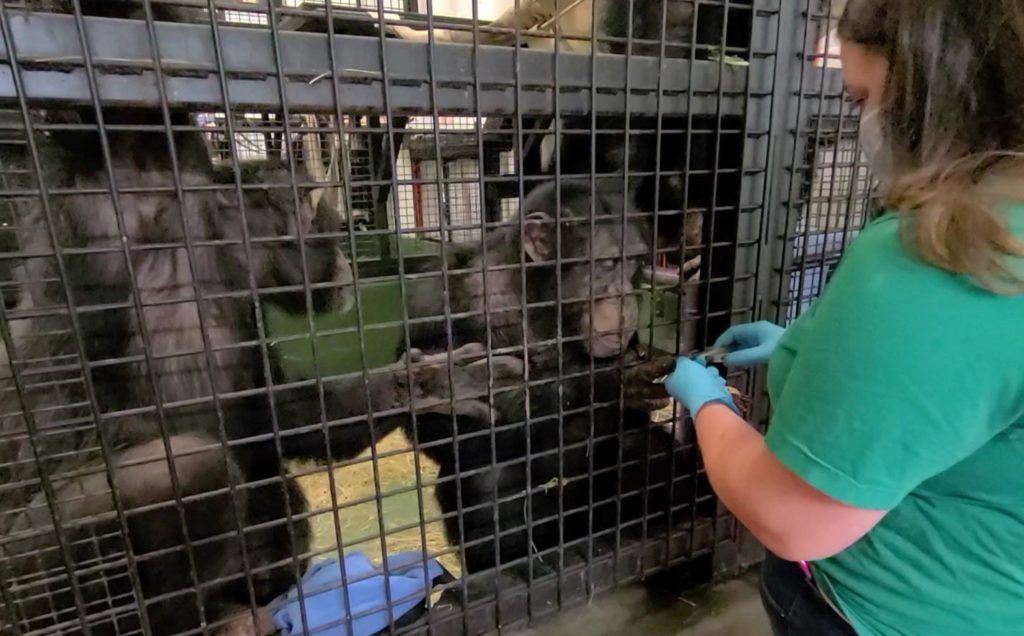
by Kate Donovan
I joined Project Chimps in 2017 as a Caregiver. The sanctuary was in its infancy, as was the Positive Reinforcement Training (PRT) program. Growing up, I always thought that if you wanted a career with animals, you became a vet. I knew I wasn’t cut out for that field and I figured animals would remain a hobby while I got a “real” job.
I tried my hand at a lot of other things before a stroke of luck led me to a Google search that would change my life—what in the world was an exotic animal behaviorist, anyway? I left my job, went back to school, and fell in love with chimps; and the rest, as they say, is history!
Give me a P, give me an R, give me a T! What’s that spell?
When I first arrived at Project Chimps in 2017, I jumped right in with a small group of eager staff who were working basic training with the chimps. I eventually took over as Facilitator of the Behavior Training Committee. And earlier this year, a dream came true for me and the Behavior Coordinator position was created.
There are many aspects to this position, but to start out I want to talk about my favorite part—positive reinforcement training. The number one question I get asked about training is “…why?” It’s a simple question, but it’s a great one.
Until fairly recently, the connotation behind “training” was equal to “tricks”. Nowadays, we aren’t training chimpanzees to skateboard or stand on their heads; we’re training them to participate in their own healthcare so that we can provide them with long, healthy lives with the least amount of stress.
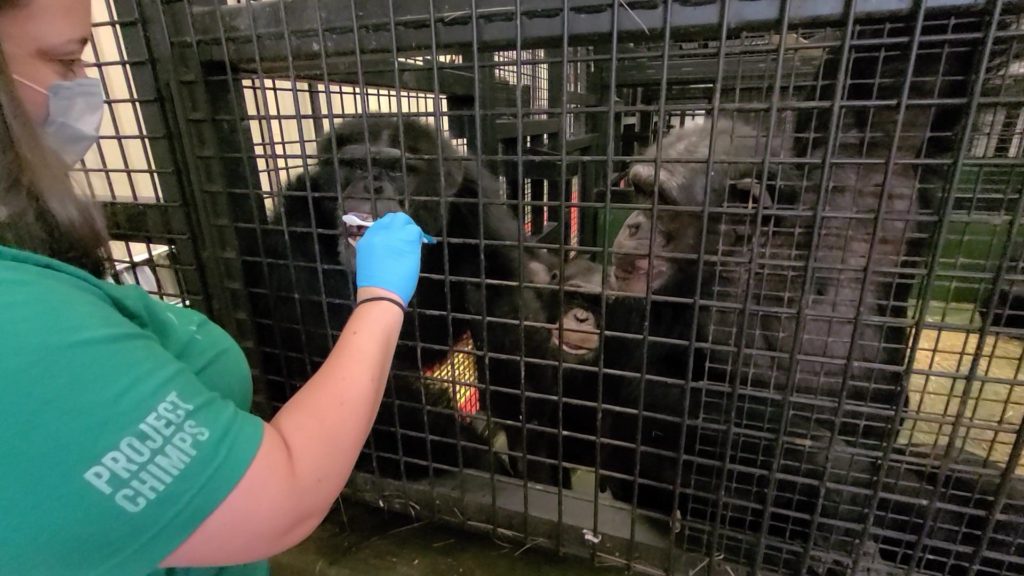
“You can’t MAKE me!“
If you know anything about chimps, you know you can’t make a chimp do anything they don’t want to do! If you need to, for example, listen to Kareem’s heartbeat with a stethoscope, that is absolutely not happening unless Kareem wants you to.
The exception to this is anesthesia, in which case he of course has no choice since he is unconscious. Can you imagine being put under anesthesia for something as simple as monitoring a heartbeat? Anesthesia is tough on the body, especially the more times it’s used on you and the older you get.
Luckily, there’s an alternative—and that’s where I come in! I get to spend my day teaching Kareem to want you to listen to his heart with your stethoscope.
You’re probably wondering how exactly I do that? To demonstrate, I’m going to continue to use the example of Kareem and his heart.
The EKG machine
Thanks to a generous donor, we have a brand new portable AliveCor KardiaMobile Personal EKG. Due to Kareem’s size, age, and love of training, we decided he would be the perfect student. It’s also a really great example to demonstrate the process of positive reinforcement training.

The setup
The first thing I did was build a “dummy” device just for training purposes. It looks enough like the real one that they’ll recognize it when the day comes to do the real test. But it’ll be no big loss if they get hold of it and break it.
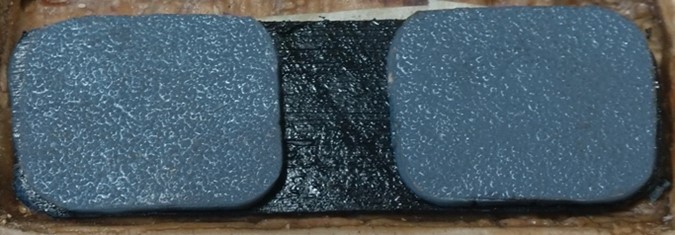
Now, how exactly do I get the device in a position where Kareem can rest his fingers on it?
This problem was way out of my wheelhouse. I turned to our fabulous facilities team, who are always excited to use their creative brains to help us problem solve.
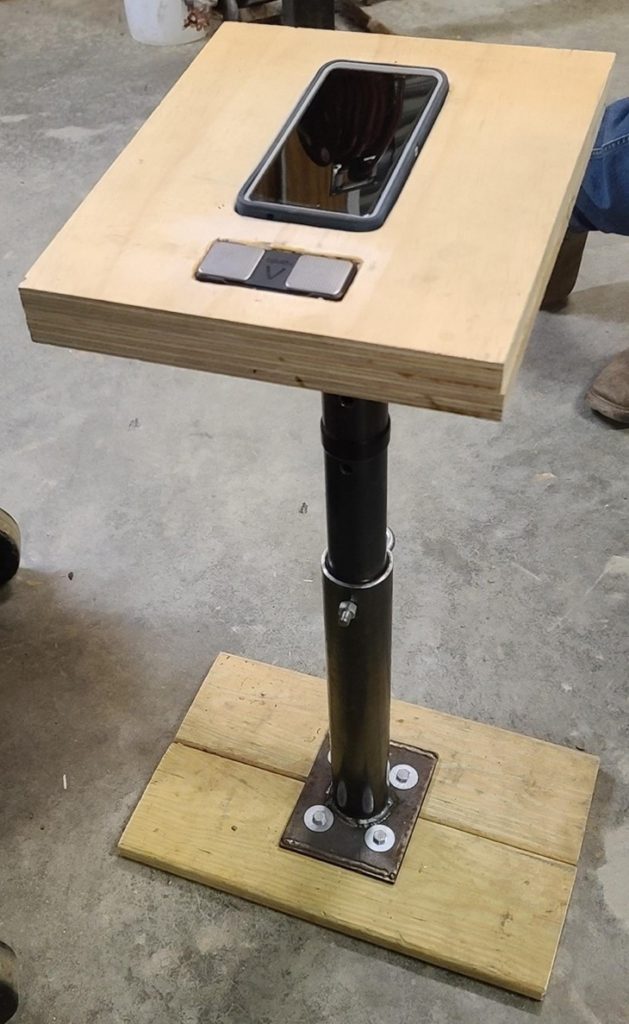
Positive Reinforcement Training baby steps
Chimps are naturally skeptical creatures; new things are scary.
Until they are comfortable, the stand starts far away where there are no visible signs of tension. They are rewarded with a squirt of juice or a peanut, or whatever else they may find delicious. This will be repeated several times. The stand is inched forward, careful to remain on the comfortable side of their anxiety threshold, reward given. Repeat again and again.
The chimps are again rewarded for staying calm and allowing it to be in their presence. With very confident chimps, this process can take minutes; with others, it can take days or weeks. It’s important to go at each individual’s pace.
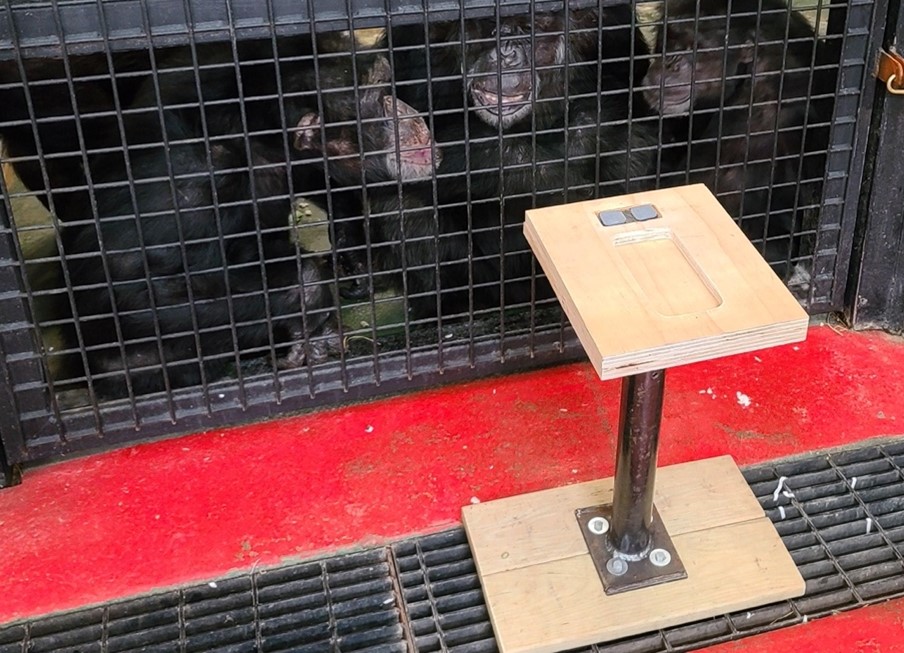
Touch it, please
The next step is to get Kareem to touch the sensors.
He is used to putting his hand through the mesh as part of routine body presentation training. Putting both through at the same time is something I don’t usually ask him for, so it will take a little work.
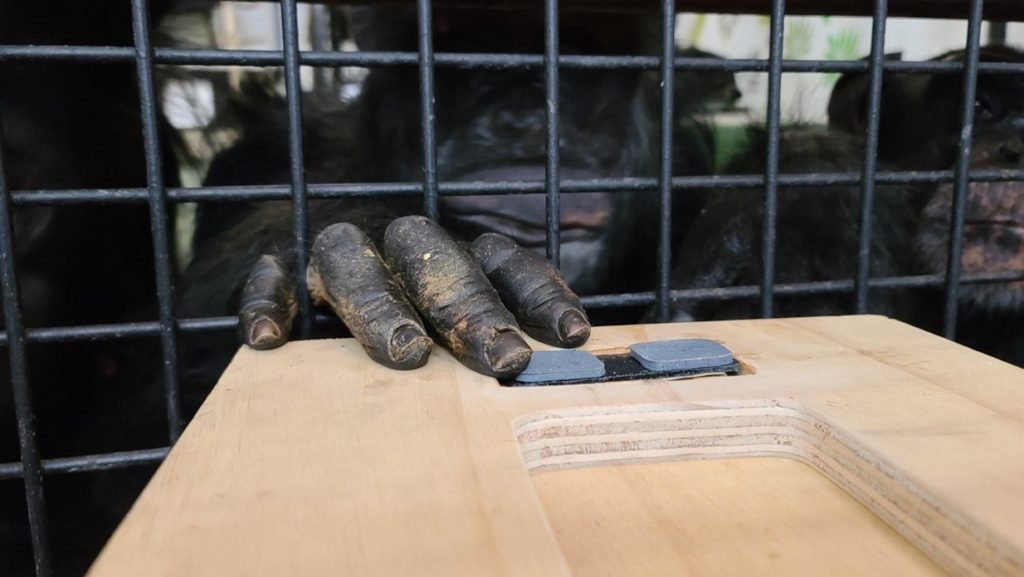
Also, knowing which fingers I want him to place on which sensor takes him a little while to figure out. This often happens in training—it seems so simple until you go to do it! But Kareem doesn’t speak English, or know what an EKG is, or even what a heart is—he’s trying to figure out which combination of moves get him the roasted edamame that I have in my pouch, and other than that, it’s all meaningless to him.
It would be very easy if I could just say, “Hey Kareem, you’re a big guy who’s getting up there in years and we love you and want to take care of you—just put each of your fingers on these spots and hold still for thirty seconds so we can see how your heart is doing, okay?”
Training is all fun and games
I have to make it a fun game for him. When he sees the stand come out, he knows what we’re about to do. If he had a bad time the last time we did it, he’s going to choose not to participate again and we lose our chance to monitor his heart. If he is intrigued by the puzzle of the training and reinforced by the rewards, he will continue to play the game and we will get the information we need.
Luckily…Kareem loves to play!
Kareem is about halfway through his EKG training. We are getting closer to the big day we run his test for real! I’m so excited to share the updates on his achievements with you in the weeks to come.
You can also view this webinar about PRT here.
You can support our behavior training program with a gift from our Wishlist, just look for items with “training” in the notes! Or make a donation today which will allow us to purchase needed items for training from the list!
